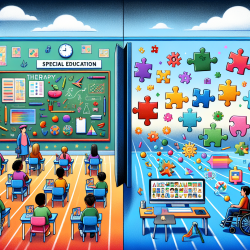Introduction
In postsecondary education, extended time for tests and examinations is a commonly requested accommodation for students with disabilities. Despite its prevalence, the practice of granting additional time often lacks empirical support and consistency across institutions. This blog explores the complexities surrounding extended time accommodations, the existing research, and proposed guidelines for their application.
The Case for Extended Time
Extended time accommodations aim to provide students with disabilities equal access to test content by mitigating the impact of irrelevant skills such as reading speed. However, the evidence supporting the need for extended time varies significantly across different disability categories.
Learning Disabilities
Research indicates that students with specific learning disabilities (LD) may benefit from up to 25% additional time, primarily when their documented impairments align with the assessment's demands. This is particularly true for tasks involving reading fluency and written expression. However, the need for more than 25% additional time is not typically supported unless there are severe impairments.
Attention Deficit/Hyperactivity Disorder (ADHD)
Contrary to common practice, research does not support extended time for students with ADHD. Studies have shown that these students perform comparably to their peers without extra time. Instead, accommodations such as stop-the-clock breaks may be more effective in addressing specific challenges related to ADHD.
Autism Spectrum Disorder (ASD)
For students with ASD, the research is silent on the efficacy of extended time accommodations. Given the heterogeneity of ASD, decisions should be made on a case-by-case basis, considering individual needs and using a standardized decision-making model.
Mental Health Conditions
Students with mental health diagnoses, such as anxiety or depression, do not typically require extended time for assessments. The provision of extra time does not address the core challenges these students face, and alternative accommodations or interventions may be more appropriate.
Co-morbid Diagnoses
Students with multiple diagnoses may have more complex needs, but the general guideline remains that no more than 25% additional time should be granted without substantial evidence supporting the necessity for more.
Decision-Making Models
To ensure fair and effective accommodations, institutions should adopt evidence-based decision-making models. These models should evaluate the functional impairments related to the disability, the nature of the assessment tasks, and the student's historical use of accommodations.
Conclusion
The provision of extended time accommodations should be rooted in evidence and tailored to the specific needs of the student. As research continues to evolve, it is crucial for educational institutions to align their practices with the latest findings to ensure equitable access to education for all students.
For more information, please follow this link.










